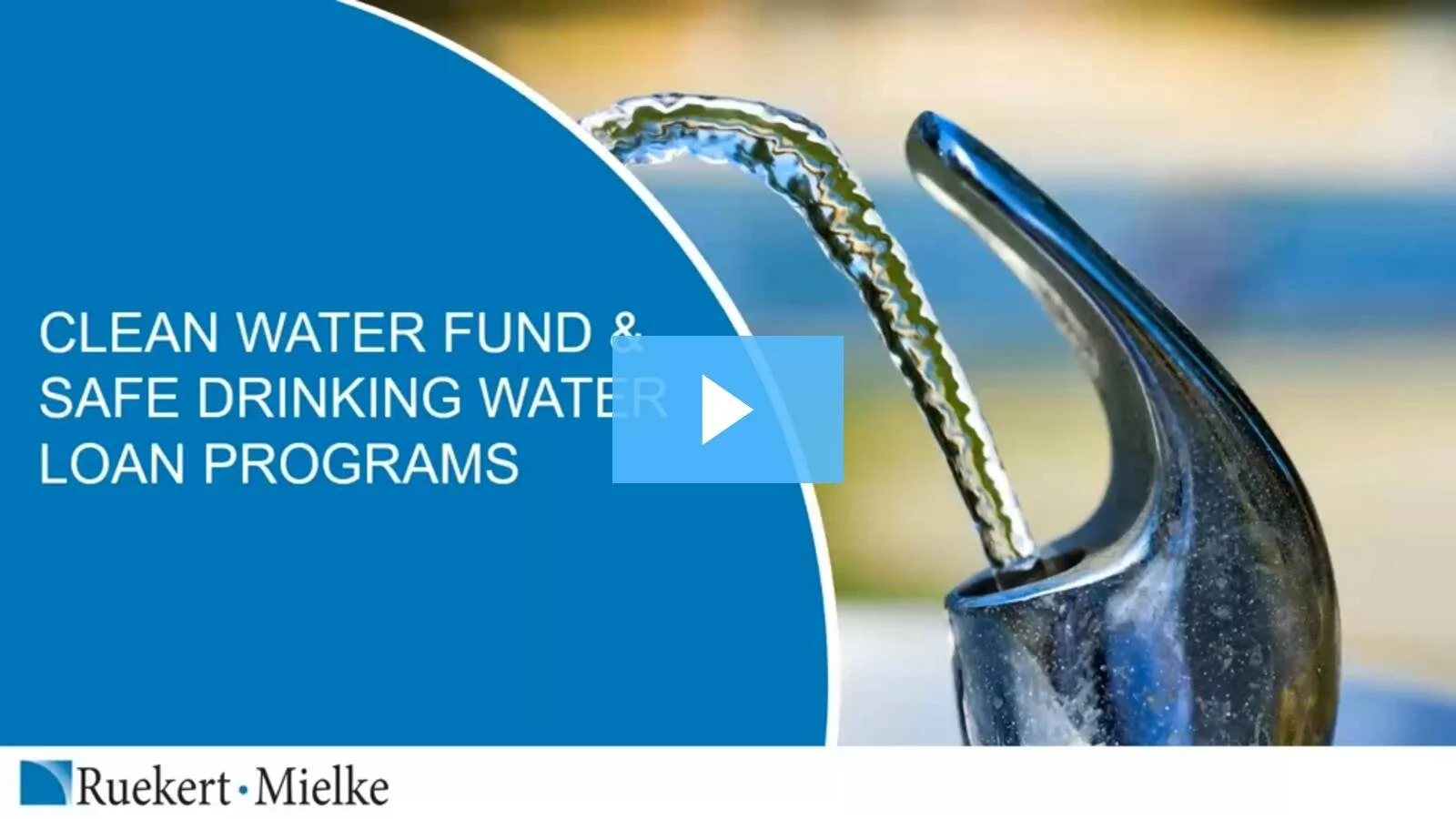Quality storm water management is necessary to maintain infrastructure and to protect our streams, rivers, and lakes from dangerous environmental hazards and pollutants.
Ruekert & Mielke, Inc. (R/M) has decades of experience in the planning, design, and construction review of storm water management and erosion control projects. We take a comprehensive approach to storm water management, looking at both short-term and long-term solutions as they relate to environmental concerns, land use plans, future population projections, and commercial development.
We use AssetAllyTM, our cloud-based geographic information system (GIS), as a communication and delivery tool for our storm water management projects. This system offers a simple interface for water quality and flood control modeling results, providing community staff with an effective method to present results to elected officials and project stakeholders.
“Working with R/M has been wonderful, as they provide professional expertise, explanation, quality work, and efficiency.”
Services
Storm Water Management System Planning & Design
Green Infrastructure
Design of Individual & Regional Storm Water Management Facilities
Floodplain Modeling & Mapping
Streambank Stabilization & Erosion Evaluations
In-Stream Restoration & Improvements
In-Stream Habitat Improvements
Wetland Screening & Delineations
Drone Mapping & Inspection
Storm Water Utility Creation & Rate Studies
Storm Water & Water Resources Grant Preparation & Application Administration
TMDL Planning & Implementation
Illicit Discharge Inspection
Pollutant Loading Analysis (Modeling)
Erosion Control Planning & Inspections
Waterway & Watershed Planning
Geographic Information Systems (GIS)
The Village of Slinger was having issues meeting new phosphorous reduction requirements in their Wastewater Treatment Plant (WWTP). At the same time, the City of Hartford was experiencing severe streambank failure through a 400-foot section of the Rubicon River. The bank’s failure was a threat to human health and safety because it was near a private development. The Village of Slinger worked with the DNR and the City of Hartford to form a unique trading agreement where Slinger would design and install the project in the City of Hartford in exchange for receiving phosphorous credits at their WWTP. The goal of this project was to stabilize 400 linear feet of streambank along the Rubicon River utilizing natural channel design.
General Mitchell International Airport (GMIA) is assigned TSS (total suspended solids) and TP (total phosphorus) wasteload allocations (WLA), as well as a Water Quality Based Effluent Limit (WQBEL) to meet Total Maximum Daily Load (TMDL) requirements established by the Wisconsin Department of Natural Resources (WDNR) and the Environmental Protection Agency (EPA) for the Milwaukee River. Learn how R/M created a comprehensive summary and operational evaluation report.
The City of Kenosha endured back-to-back rainfall events that resulted in catastrophic local and regional flooding. The City partnered with R/M to begin a comprehensive analysis of the City’s storm water infrastructure from both a flood control and water quality perspective, including a 3D flood model and storm water quality model. After the 2017 floods, the data collected from the flood and water quality models allowed R/M to quickly conduct a priority area analysis and evaluate the City’s flooding hot spots. The results of this analysis ultimately led to the following storm water improvement projects.
A seemingly simple project can often have challenges that can make or break a budget. For Ocean Spray, a strict, two-week timeframe in which part of the project could be completed meant the difference between success and potentially costly back-ups in production. Ruekert & Mielke, Inc. (R/M) was the only firm to offer a schedule that fit within the timeframe and kept on budget.
Ruekert & Mielke, Inc. (R/M) designed site engineering plans for a major addition to this existing school facility. The project included the design of two large rain gardens adjacent to a new idea laboratory section of the building. The rain gardens were programmed to receive storm water from the majority of the expansive school roof and to infiltrate the water naturally into the ground instead of directing it to another area of the site.
This education sector project, that consisted of two phases, started with an existing elementary school, with a typical asphalt play area and parking lot that drained directly into the city’s storm sewer system and land improvements to a wooded lot adjacent to the school grounds.
The City of Greenfield struggled with storm events flooding Wildcat Creek to the point of frequent over-topping, structure flooding, and bank erosion. The community voiced concerns during public information meetings, driving the City to understand the extent of the flooding problems. Ruekert & Mielke, Inc. (R/M) were brought on board to assist with our professional engineering services to determine the flood risks and develop a more integrated storm water system.
The City of Kenosha has an aged storm sewer system with multiple improvements. However, they had no way to quantify those improvements as part of their MS4 Permit. Ruekert & Mielke, Inc. (R/M) was retained to perform a comprehensive City-wide storm water study for both water quantity and water quality. Additionally, R/M is providing the analysis in conjunction with a GIS interface.





























